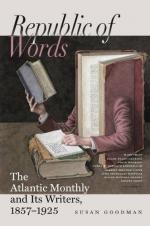It is out of the question to look for any such nice work with these tools as our best amateur riflemen are constantly in the habit of performing with the heavy thick-barrelled American rifle. The short Enfield is found to shoot better than the long, owing to the increased “spring” of the long, thin barrel of the latter; and the English themselves are becoming aware that they have carried the point of reducing the weight too far, and their best gun-makers are now insisting upon the fact which General Jacobs told them years ago,—that a “heavy conical ball cannot be used effectively from a long, thin barrel like that of the Enfield rifle, which is liable to great vibration.”
The Enfield rifle, however, is a long step in advance of the old smooth-bored musket, concerning which a veteran British officer has declared his opinion that “a man might sit at his ease in an armchair all day long while another at two hundred yards’ distance was blazing away at him with a brown Bess, on the sole condition that he should, on his honor, aim exactly at him at every shot.” Per contra to this, may be stated the fact, mentioned by Lord Raglan in his despatches, that at Balaklava a Russian battery of two guns was silenced by the skill in rifle-shooting of a single officer, (Lieutenant Godfrey,) who, approaching under cover of a ravine within six hundred yards, and having his men hand him their Enfield rifles in turn, actually picked off the artillerymen, one after another, till there were not enough left to serve the guns, and this in spite of the storm of shot and shell which they poured around him in reply, he being under no necessity of exposing a larger target than his head and shoulders for them to aim at.
A trustworthy breech-loading rifle has long been a desideratum with military men; but nothing has yet been produced which offers sufficient advantages, or seems sufficiently free from objections, to authorize its introduction as anything more than an experiment. In fact, the special object of a breech-loading gun—that of enabling its owner to deliver his fire with greater rapidity—is found in actual service to be an objection: the soldier being tempted, in the excitement of battle, to load and fire as rapidly as possible, and thus to waste the greater portion of his shots, whereas the primary object at such a time is to induce the deliberation which alone can insure efficiency. It must be obvious to any one who reflects upon the matter, that in reality the whole question of efficiency in battle must hinge upon




